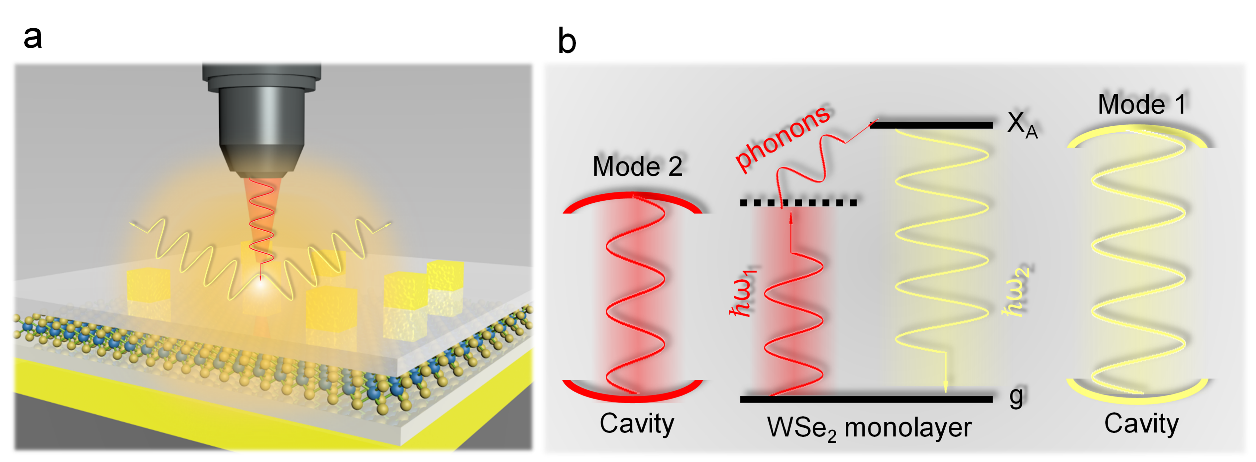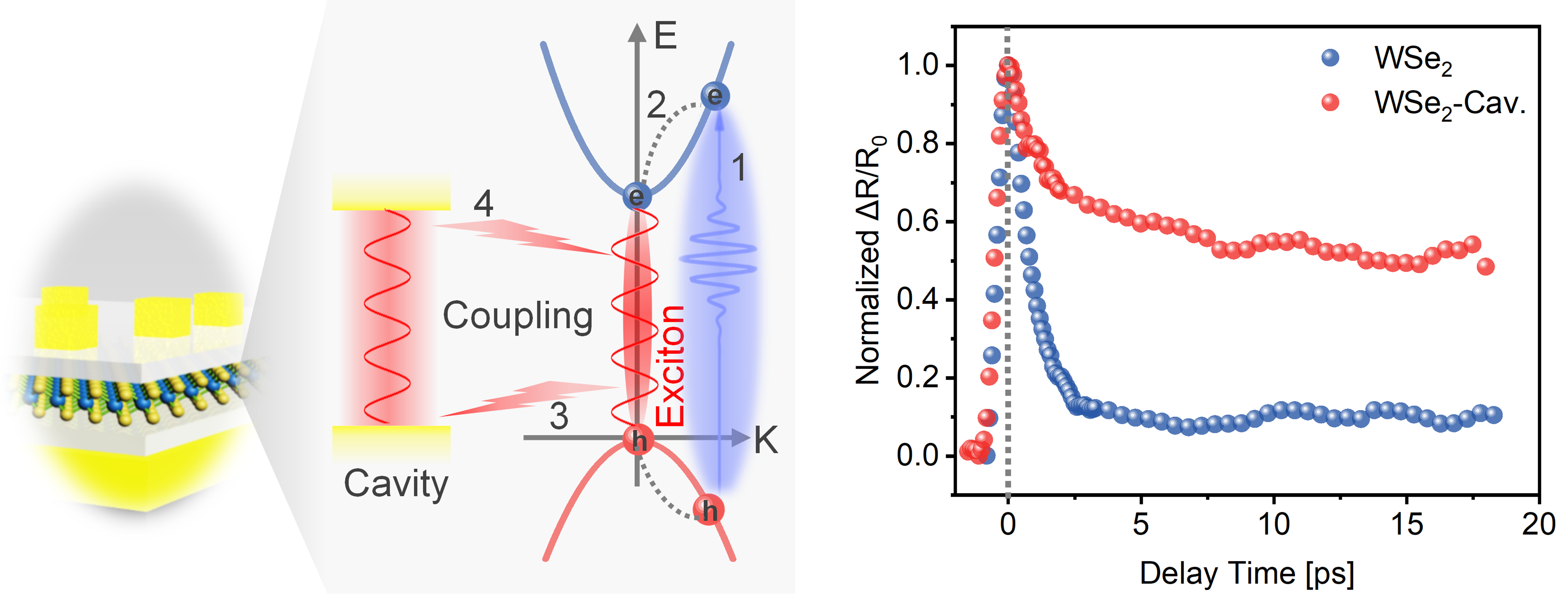|
As decreasing size of optoelectronic devices, along with the increase in energy consumption and heat flux density, which makes thermal management a key factor restricting their performance and reliability. Thermal energy in solid exists in the form of phonons. In 1929, Pringsheim proposed that efficient phonon-assisted upconverted luminescence can remove a large number of phonons via high-energy photon radiation, and reduce the temperature of devices, so as to achieve optical refrigeration. Landau, the famous Soviet physicist, gave a complete theoretical explanation in thermodynamics afterwards. Optical refrigeration has the advantages of no mechanical vibration, no refrigerant, small in size and easy to integrate. In the future, it is expected to subvert existing refrigeration technologies and realize all-solid refrigeration for integrated optoelectronic devices. The key for achieving efficient phonon-assisted upconversion and optical refrigeration is to select suitable materials. Transition metal dichalcogenide (TMDC) monolayers have attracted much attention in recent years because of their excellent optoelectronic properties. In TMDC monolayers, due to quantum confinement effect of atomically thin layer, two-dimensional excitons show characteristics of strong dipole moment, narrow linewidth, low disorder and high binding energy (~ 100 meV), which can exist stably at room temperature. The strong coupling with photons creates favorable conditions for realizing phonon-assisted upconversion at room temperature. Up to now, the existence of upconversion effect of two-dimensional exciton in intrinsic TMDC monolayer has been proved experimentally. However, due to limited interaction distance between excitation photons and TMDC monolayer, the intensity/efficiency of upconversion is too weak for applications like optical refrigeration, and research on further enhancement of upconverted emission at low-threshold excitation for 2D excitons is still in an early stage.
Figure 1 | Doubly resonant upconverted emission of 2D excitons in plasmonic nanocavity. a, Schematic for the device of plasmonic nanocavity enhanced excitonic upconverted emission. b, Schematic for excitonic upconversion luminescence and doubly resonant enhancement by plasmonic nanocavity modes. Towards this problem, Assoc. Prof. Pengfei Qi from Institute of Modern Optics at Nankai University and Prof. Zheyu Fang from School of Physics at Peking University have realized doubly resonant phonon-assisted upconversion enhancement of two-dimensional excitons based on both local field enhancement and Purcell spontaneous emission enhancement of plasmonic nanocavity. The elaborately designed doubly resonant plasmonic nanocavity consists of substrate, gold thin layer, alumina isolation layer, two-dimensional material layer, organic isolation layer and gold nanocubes from bottom to top as shown in figure 1a. The double resonance between plasmonic modes of gold nanocubes, incident photons and emitted photons of excitons can be realized by adjusting multiple parameters, such as the size of gold nanocubes and gap between gold film and nanocubes (figure 1b). The upconversion intensity and enhancement coefficient were obtained by processing the excitonic upconversion spectra of 2D material monolayer coupled with silicon substrate and plasmonic nanocavity measured under various excitation powers. Considering the micro area of excitation spot and the size of nanocavity, it is proved that two-dimensional excitonic upconversion of the doubly resonant nanocavity is enhanced by more than 1000-fold, and the power of saturation threshold is reduced by 2 to 3 orders of magnitude.
Figure 2 | Local field enhancement and Purcell effect. Left, Schematic for Purcell effect regulated ultrafast relaxation of exciton in plasmonic nanocavity. Right, Typical femtosecond pump-probe detection signals. Finally, researchers studied the accelerated spontaneous emission rate of 2D excitons coupled with plasmonic nanocavity, namely the Purcell effect (figure 2), by using femtosecond pump-probe detection techniques. According to typical pump-probe detection signals in 2D material monolayer coupled with silicon substrate and plasmonic nanocavity, researchers extracted the ultrafast relaxation processes of both non-radiative and radiative components via bi-exponential fitting, and proved that the spontaneous emission lifetime of excitons in plasmonic nanocavity was reduced by more than one order of magnitude due to Purcell effect. In summary, based on locally enhanced light field and accelerated spontaneous emission, Chinese scientists realized phonon-assisted giant upconversion enhancement of 2D excitons through doubly resonant plasmonic nanocavity, which provides a new idea to enhance upconversion emission of 2D excitons, which is an important step in exploring the upconversion effect in electron-phonon strong coupling system, and lays a solid foundation for realizing net optical refrigeration. See the article: Qi, P., Dai, Y., Luo, Y. et al. Giant excitonic upconverted emission from two-dimensional semiconductor in doubly resonant plasmonic nanocavity. Light Sci Appl 11, 176 (2022). |


